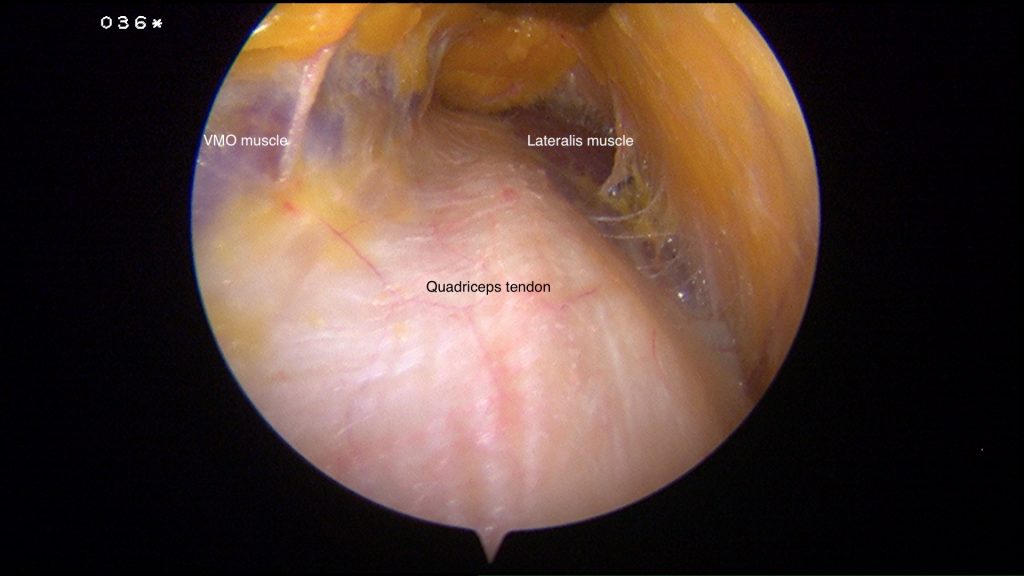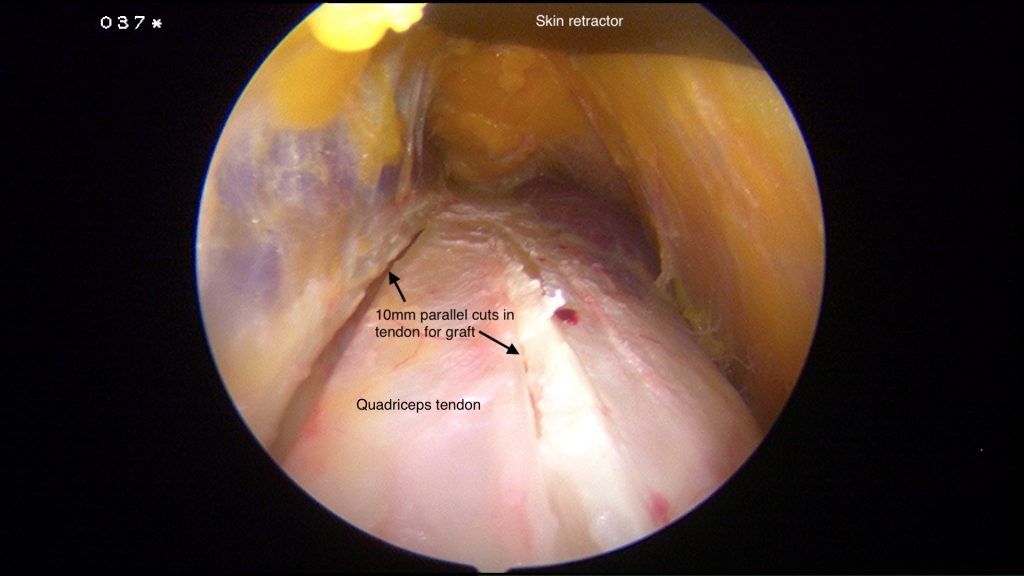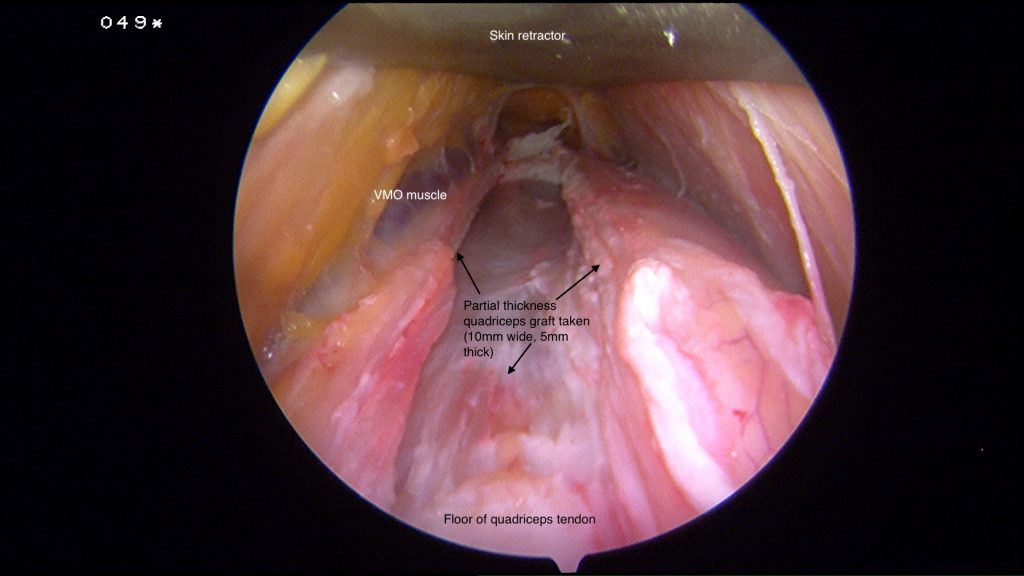Quadriceps Graft
The anterior cruciate ligament (ACL) plays a critical role in stabilising the knee joint. ACL injury is a common occurrence in sports and other high-impact activities. ACL reconstruction surgery is the standard treatment for repairing a torn ACL and restoring knee function. Grafting is when healthy tissue is taken from one area of the body and used to replace damaged or injured tissue. Several graft options are available for ACL reconstruction, including the following tendons (which join muscles to bone):
quadriceps tendon,
hamstring tendons,
and patellar tendon.
This webpage discusses the key advantages of using a quadriceps tendon ACL graft for reconstruction surgery.



Strong and Durable Graft Material
The quadriceps tendon is a robust, thick tissue that connects the quadriceps muscle (muscles at the front of your thigh) to the patella (knee cap). It is naturally strong and durable and this makes it an excellent choice for ACL grafting. Studies have shown that the quadriceps tendon has comparable biomechanical properties to other graft options, resulting in a stable and long-lasting reconstruction (Marcaccio et al. JBJS Reviews 2023 Oct).
Lower Donor Site Morbidity
The donor site is the location that healthy tissue is taken from or ‘harvested’. Donor site morbidity means the complications and side effects that could come from harvesting graft tissue. Compared to patellar (knee cap) tendon graft, which can result in pain in front of the knee and a higher risk of patellar tendonitis (swelling of the tendon), the quadriceps tendon graft has a lower risk of donor site morbidity. The harvesting procedure keeps most of the quadriceps tendon intact; this reduces the risk of tendon weakness and the likelihood of complications after surgery.
Suitable for Revision Surgeries
In cases where a first ACL reconstruction has failed or a re-injury occurs, the quadriceps tendon can act as an alternative graft choice for the next surgery. Its robust nature and the fact that there is a lot of tissue available make it a reliable option for people who require a second reconstruction surgery.
Versatile Graft Sizes
The quadriceps tendon is a versatile graft option due to its ability to be harvested in various sizes, depending on a person’s needs. This flexibility allows surgeons to tailor the graft size to the individual, ensuring a more personalised and successful reconstruction.
High Patient Satisfaction
Many patients who have ACL reconstruction with a quadriceps tendon graft report high levels of satisfaction with their surgical outcomes. They often experience improved knee stability, reduced pain, and a faster return to pre-injury activities.
It’s important to note that there are also some potential downsides to using a quadriceps tendon graft. The inability to fully straighten (or extend) the leg at the knee is more commonly reported with quadriceps graft, when compared to other types of graft. This is likely because quadriceps tendon grafts are larger and contain more collagen. However, the loss of extension can usually be prevented by carefully following a post-surgery plan. This usually involves using an ice pack on the knee to cool the area and reduce swelling, completing knee extension exercises and attending physiotherapy sessions soon after surgery. The aim of this plan is to achieve full extension/knee straightening including some active hyperextension within the first 6 weeks after surgery.
Conclusion
The best ACL graft has similar biomechanical properties to the ‘original’ ACL. The best ACL graft:
- has a low complication rate,
- has minimal harvest site problems,
- Is safe to use in children,
- has good graft maturation and clinical outcomes.
The quadriceps graft has all these advantages, with 20% more collagen in a cross-sectional when compared with patellar tendon graft, better flexion strength (ability to bend) than hamstrings with no pain at the front of the knee on kneeling.
By choosing a quadriceps tendon graft, patients can typically expect a high likelihood that the surgery will be a success and a quicker return to their active lifestyles.
